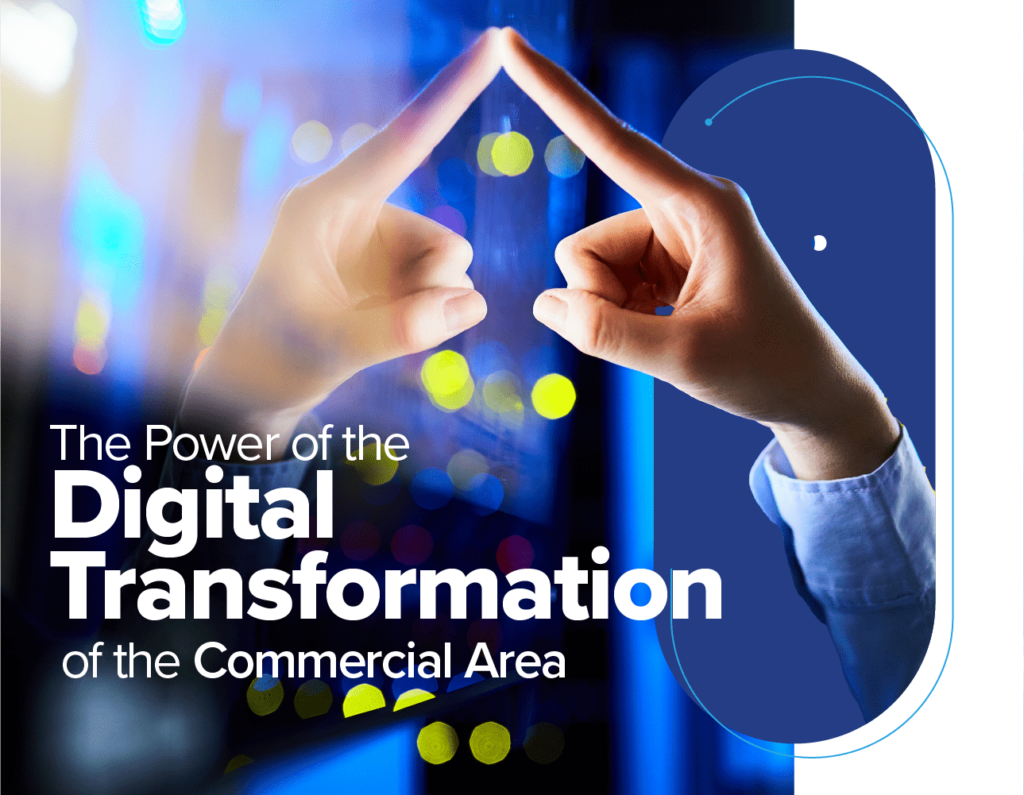The commercial area of companies is like the senses in the human body because with them we perceive and interact with the environment and obtain an idea of our reality.
The commercial area is in contact with customers and can analyze their environment while providing intelligence on the competition and other variables. Therefore, today more than ever, the commercial area requires new digital tools that help it to improve this interaction with customers and better understand their environment.
The Great Digital Transformations
In the last century, the first great digital transformation of the commercial area began with the widespread use of computers, word processors, and spreadsheets. Shortly after, the internet connection and the rise of e-mail were added.
Currently, these technologies are harmless and some of them are beginning to be considered obsolete.
The next digital transformation occurs through the integration of personal tools to business management systems, such as databases, ERP, CRM, which begin to support the daily operations of the commercial area. All this is enhanced with the appearance of social networks and large-scale data analytics (big data). We are talking about taking advantage of not only the potential of each seller but also significantly increasing their capabilities, in order to allow them to solve problems. Strategically difficult negotiations increase your field of action and your speed of response to increasingly demanding customer demands, while proactively integrating with the rest of the company’s areas, that is, production, finance, human resources, logistics, and marketing.
Concepts such as lead aggregation have recently been consolidated in the digital world, which basically consists of helping companies to recognize us as a business of interest, either because of one of our developments and solutions or because of a concept that makes us attractive for them. This leads to nurturing, which basically serves to support the customer in making purchase decisions, build loyalty with the brand, and finally become its main promoter. These concepts in the corporate field are truly disruptive and require the support of experts and specialized professionals throughout the company’s value ecosystem.
Digital Customers, Digital Sellers
With the pandemic, the need to digitize accelerated. Companies rely much more on the internet to research products and services they require. They look for case studies, listen to podcasts and interviews, participate in webinars, and update themselves with their peers through networks such as LinkedIn, thus obtaining greater knowledge and generating greater demands on their suppliers.
Therefore, the sales divisions must keep up with these customers and must support the transformation of the commercial area. This means that the company must be organized to respond to customer demand and have a strategy that enhances this knowledge in the commercial area.
Ray E. Wang, the author of the book “Disruptive Digital Business”, which I highly recommend, shines a light on what a business area should be today. Wang notes: “New models will accelerate the innovation offer and reduce the friction of business plans. New efficiencies will free up resources and time for innovation. New sets of requirements will lead to the creation of new types of jobs”.
At ECHEZ, we work with the most advanced and recognized methodologies and technologies and those of world-class companies. This is done to support the client in all the necessary steps to maintain the rhythm in a constant of our times, the digital transformation.
How To Do It?
The application of these methodologies becomes a discovery process in the hands of the company’s salespeople, who begin to rely on the digital. From the use of social networks to identify business opportunities, to training sales teams to take a hybrid model between traditional and digital sales, and beyond, integrating analytical and artificial intelligence tools that allow taking initiatives and anticipate customer needs.
In fact, social selling is just a turning point in the entire digital equation, which is now enriched with the modeling of digital identities and the deployment of solutions to accompany the client throughout their digital journey. This is done when they go from a product sale process, that of brand loyalty, and the establishment of a stronger relationship than that of customer-seller.
The secret, at least that of ECHEZ, is to automate processes and make the work easy for the commercial area, so that they can dedicate themselves to developing valuable strategies and respond with solutions to the client, constantly enriching their experience.
Empowering the company and not only the commercial area is a priority so that, from social networks, all interest in offering a better experience without being invasive can be reflected. For this, it is vital to have tools and technologies that allow the generation of customer scores and rankings, in order to automate and provide timely responses to their needs.
Companies can achieve this if:
They provide trust and relevance: Regardless of how digital the process is, trust is forged by people, results, and closeness to the client, always generating value, particularly in critical situations. This is not achieved by working in isolation. It has never been like this. In fact, the client will feel more confident if shown a team of allies, associates, and collaborators to go beyond a mechanical process in a logistics chain and turn the relationship with the company into a valuable experience within a coherent ecosystem in which the axis are corporate customers.
They are disruptive: Deploying cutting-edge tools that the commercial area takes advantage of from its first contact, positively impacting the client, both in their contact experiences and in their digital journey.
They achieve effectiveness: The objective of the commercial area goes beyond selling and meeting budget goals. Today, the client must be satisfied and interested in the news of the company and willing to interact with it; that is the new role of the commercial area.
For this reason, the P2P model has become widespread, which speaks of several concepts condensed into these three characters:
Partner to Partner, which is the collaborative work between the members of the value chain to increase that value and make the business client achieve their goals.
Place to Place, because it is no longer simply about things getting to their place, but rather enriching the process and ensuring that the business customer takes advantage of the product when and where it is required.
Point to Point, in which the ecosystem and channels that support the business become relevant by delivering experiences, solutions, and innovation along the way.
They adapt to new realities: What comes after the quarantine, after the pandemic, and after we forget this decade? These questions are the ones that must be answered to address possible scenarios of response to the customer’s need.
They generate consistency: And reciprocity. In other words, the company and the commercial area must align with the client’s objectives and leverage their activity to exceed their expectations.
At ECHEZ, and based on our experience with world-class clients, we can assure that there is nothing better than having a strategic & expert ally, with a panoramic vision of the market and with the other senses awake to achieve timely response to demands of the current and potential customers.
We consider that the transformation of the commercial area must be attended by experts, hand in hand with the best allies available, and with the possibility of improving each element in a timely manner. Therefore, without hesitation, we can suggest that you consider looking for us and starting a new stage in the transformation of the commercial area.









